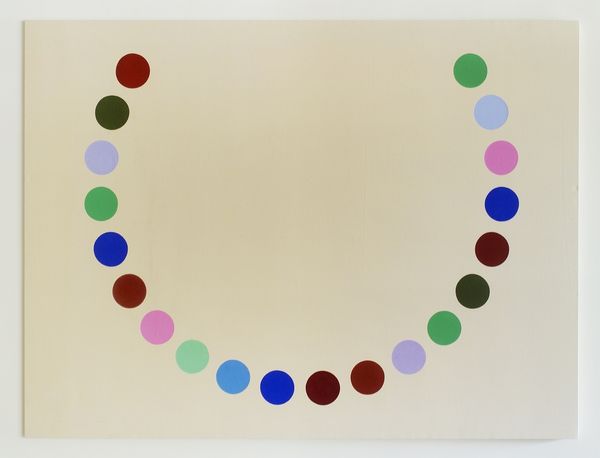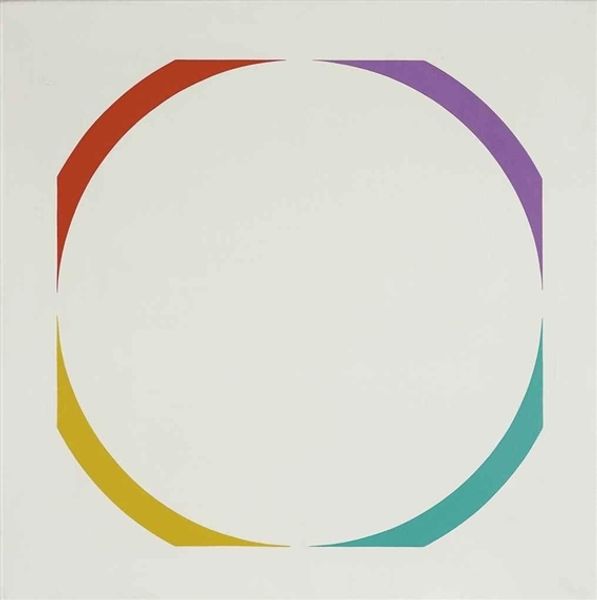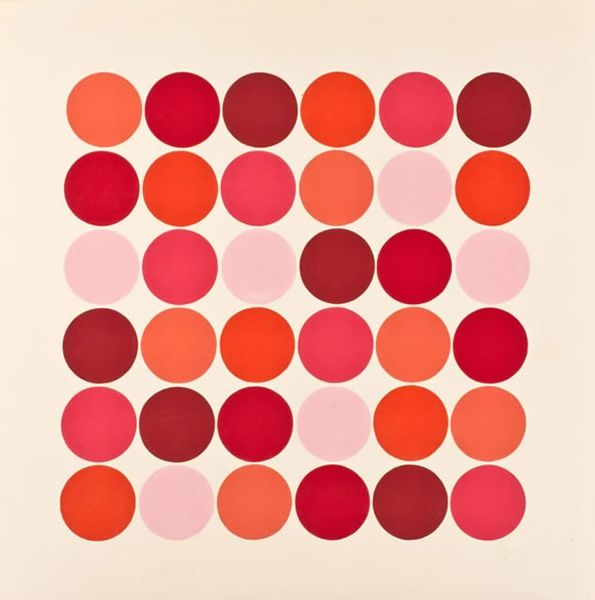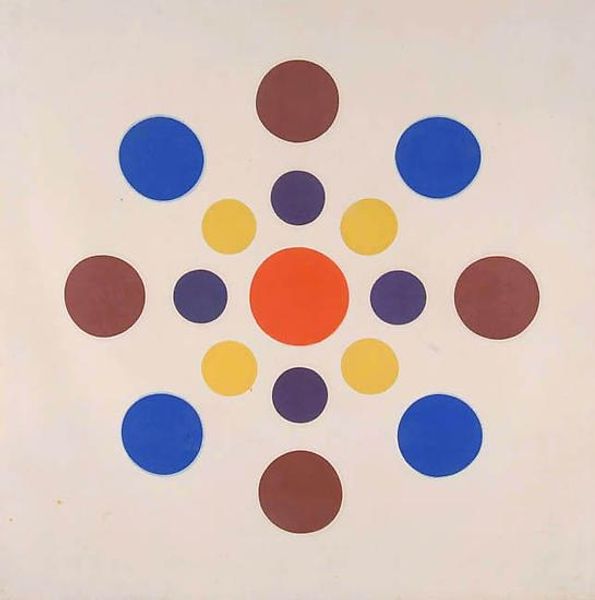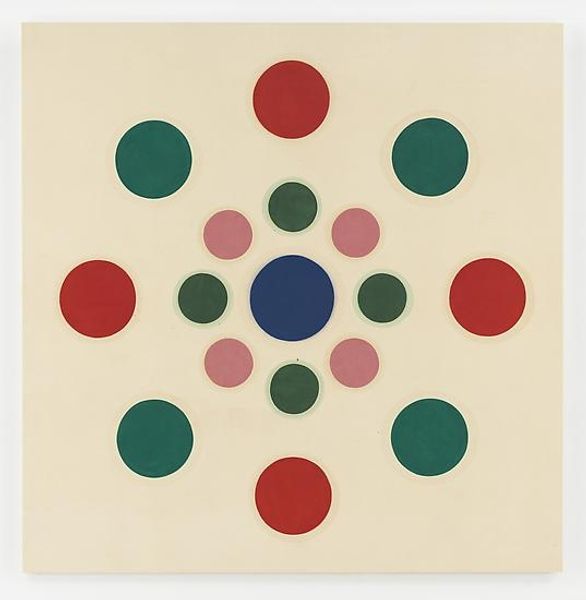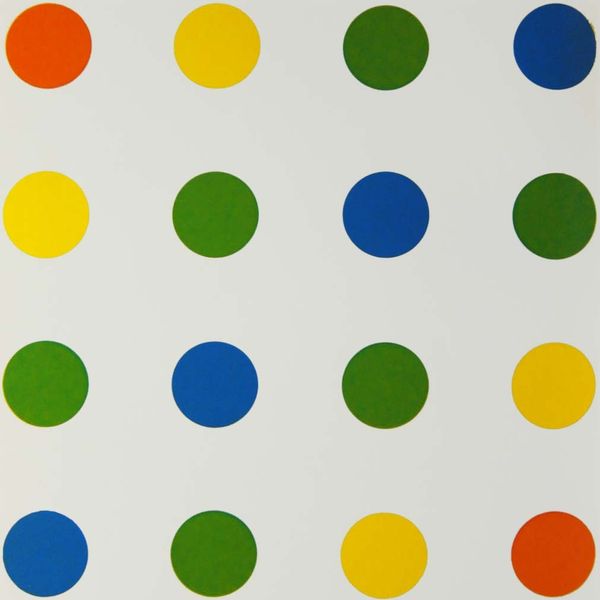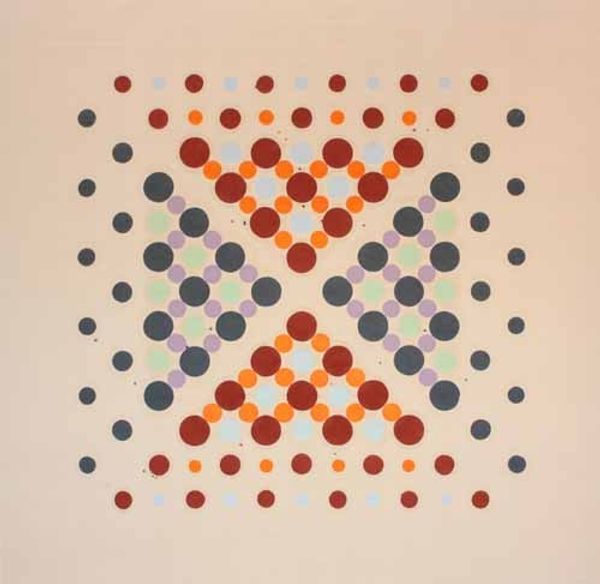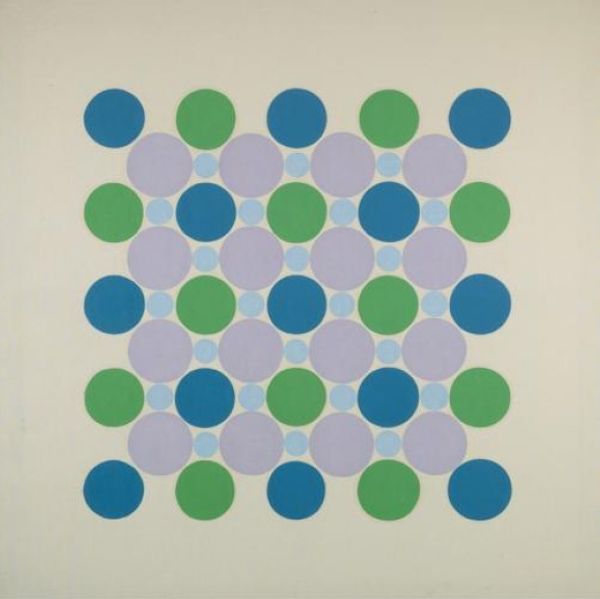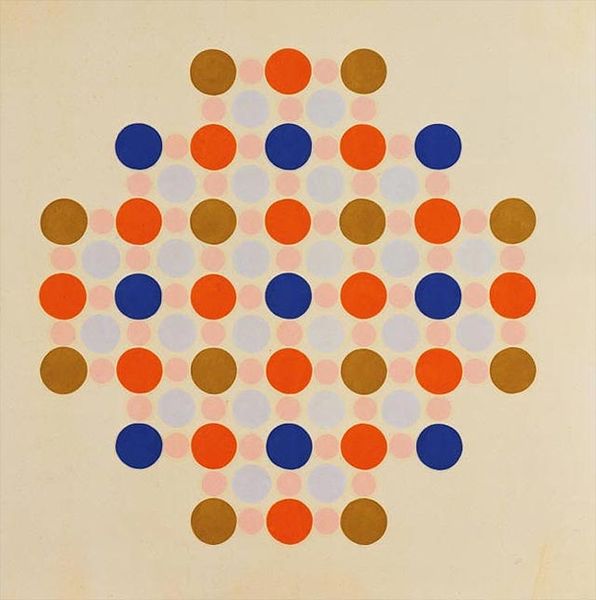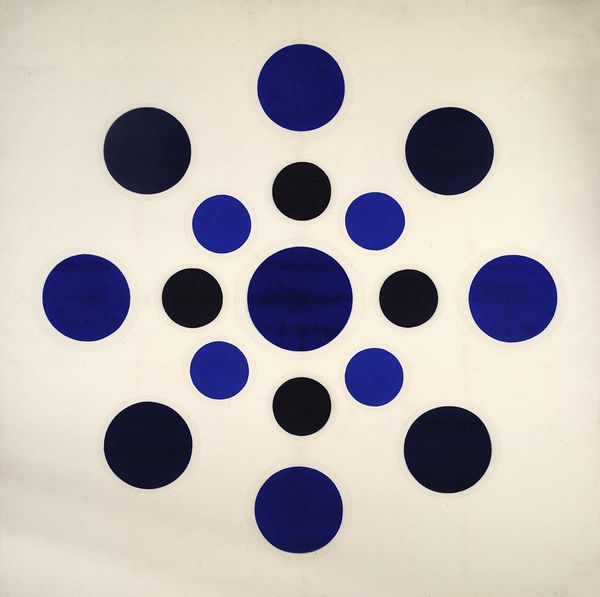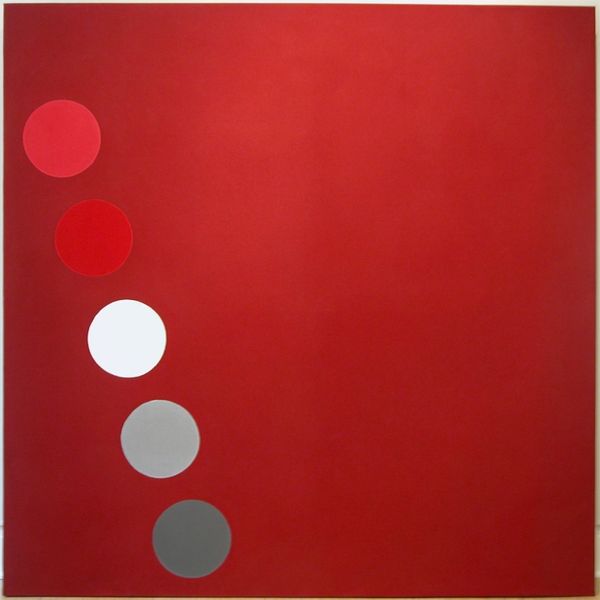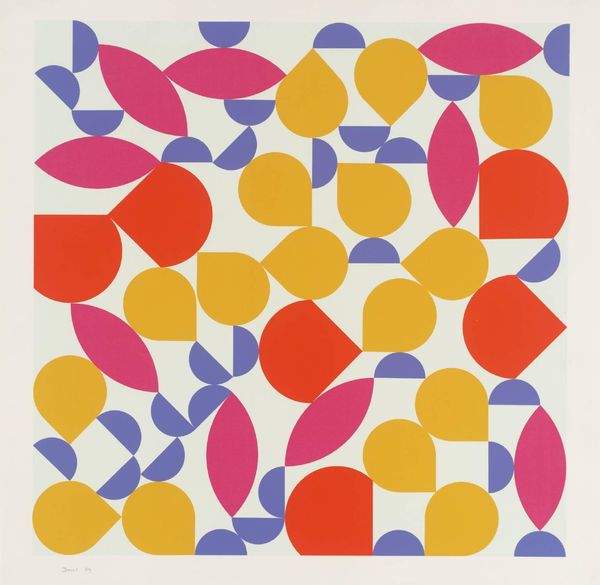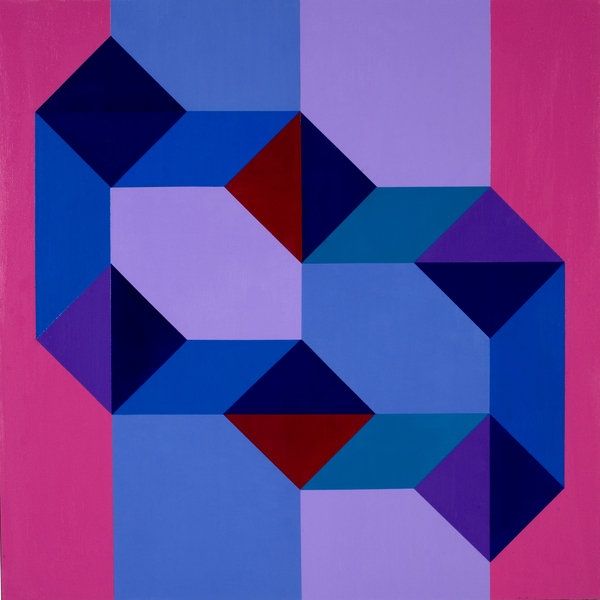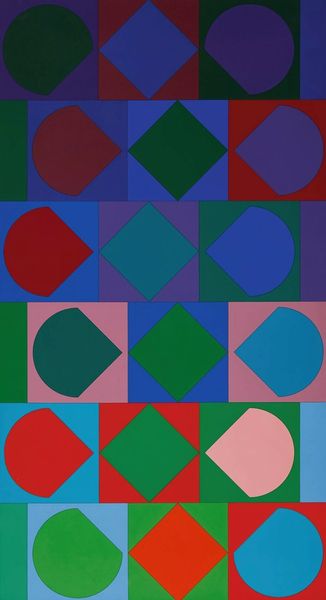
painting, acrylic-paint, ink
#
op-art
#
painting
#
minimalism
#
circle
#
pattern
#
op art
#
colour-field-painting
#
acrylic-paint
#
geometric pattern
#
ink
#
abstract pattern
#
pink
#
minimal pattern
#
geometric
#
geometric-abstraction
#
abstraction
#
hard-edge-painting
Copyright: Thomas Downing,Fair Use
Curator: "Fold Seven," an untitled piece, presents us with an intriguing arrangement. What do you make of its rather spare aesthetic? Editor: At first glance, it feels incredibly serene. The muted color palette – shades of pink, purple, brown and red arranged in a circle – is almost hypnotic. The shapes’ simplicity focuses the viewer’s gaze on color relationships. Curator: Indeed. There is a focus on materiality as the acrylic or ink used in painting these uniform shapes affects color rendering. It reminds me of the Washington Color School and their exploration of industrial methods in fine arts; each is clearly machine-made with minimal manual processes. I'm particularly struck by how that mechanical touch alters art, commodifying a singular piece into mass replicability. Editor: I understand that perspective, but looking purely at form, that regularity has power. Think about the negative space it carves out – how it forces the eye to continuously loop and consider these circles as interrelated, formally linked visual units. I almost feel an optical sensation of movement, despite its still being. Curator: To take that sensation a step further, does it consider commercial circulation? After all, works like these serve economic purposes and affect the material lives of audiences consuming, perhaps indirectly, that which is now within institutional walls. It prompts inquiries into how art both constructs class boundaries and also subverts those divides, presenting a site of political contestation with labor playing a huge role in such visual schemes. Editor: Well, to steer the topic back to pure visuals, for a second; I see how the repetition and slight tonal shifts, perhaps accidental effects during mass replication, can create a pulsating optical effect and also prompt us to seek minute differentiation despite clear homogenizing ambitions on a mass production scheme. It encourages closer visual attention. Curator: Perhaps. To me, the visual experience and formal aspects will ultimately fail if divorced from tangible production histories, from where mass consumption becomes integrated. Editor: A compelling tension we've located together – whether pure formalism or contextual grounding reveals this art's truest depths. Thank you for guiding me towards your unique readings. Curator: My pleasure! Appreciating visual works within comprehensive sociopolitical spheres can surely yield new art apprehensions and cultural realizations.
Comments
No comments
Be the first to comment and join the conversation on the ultimate creative platform.
